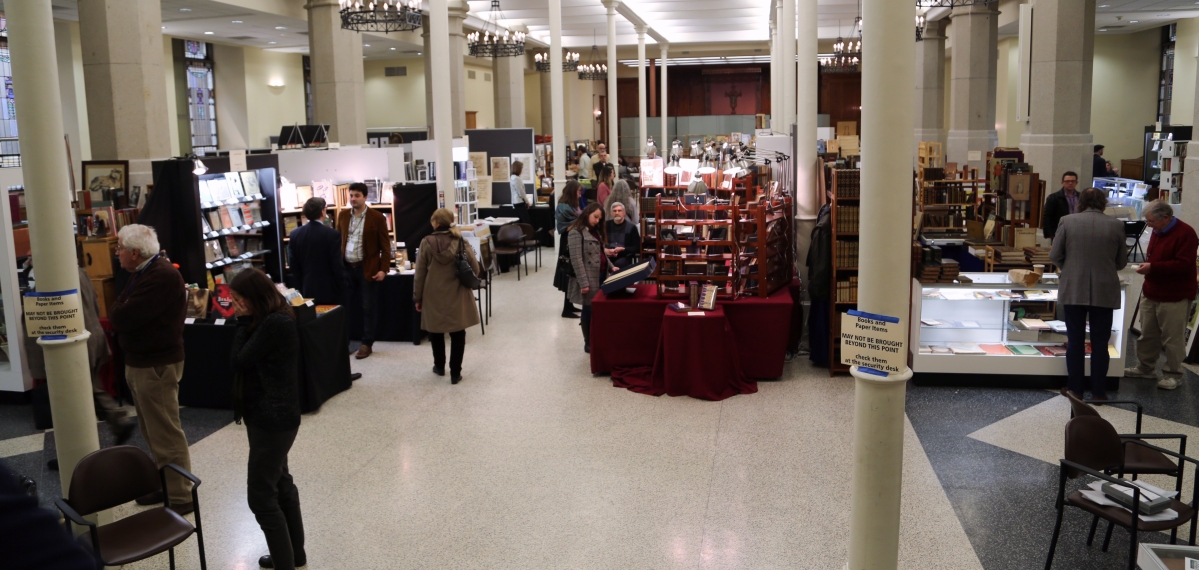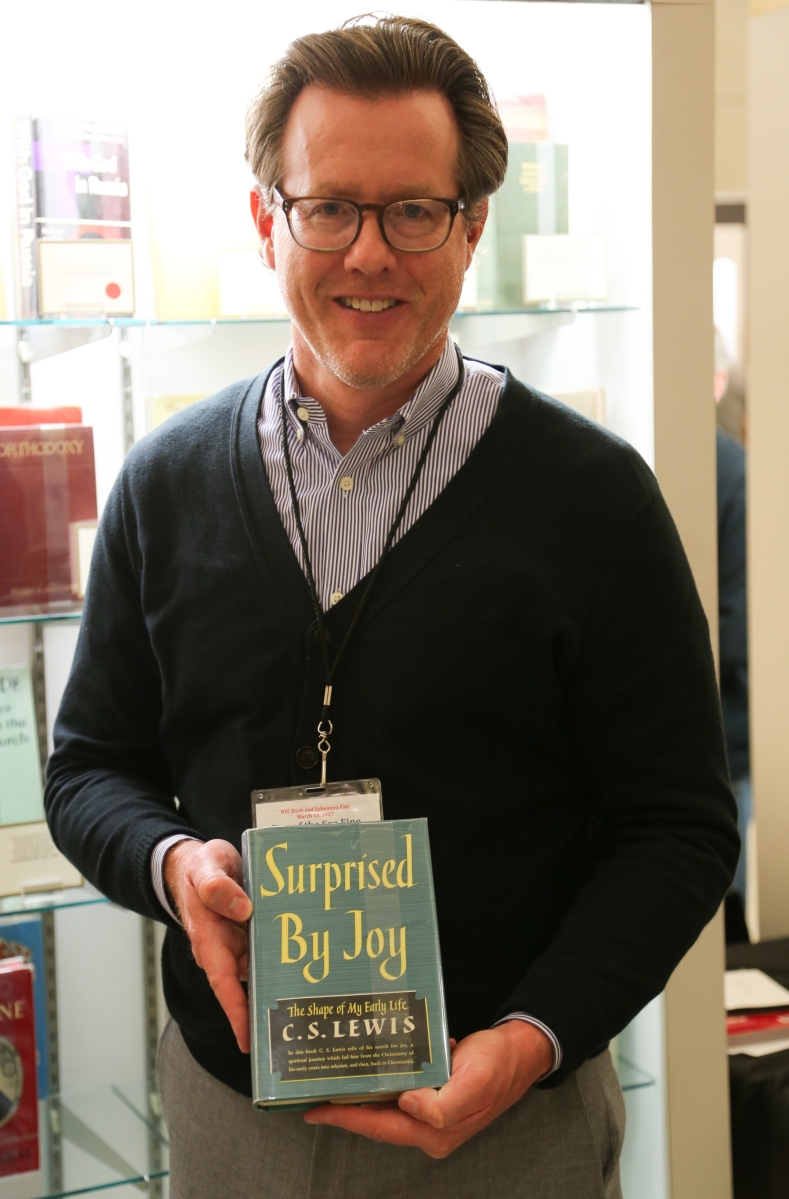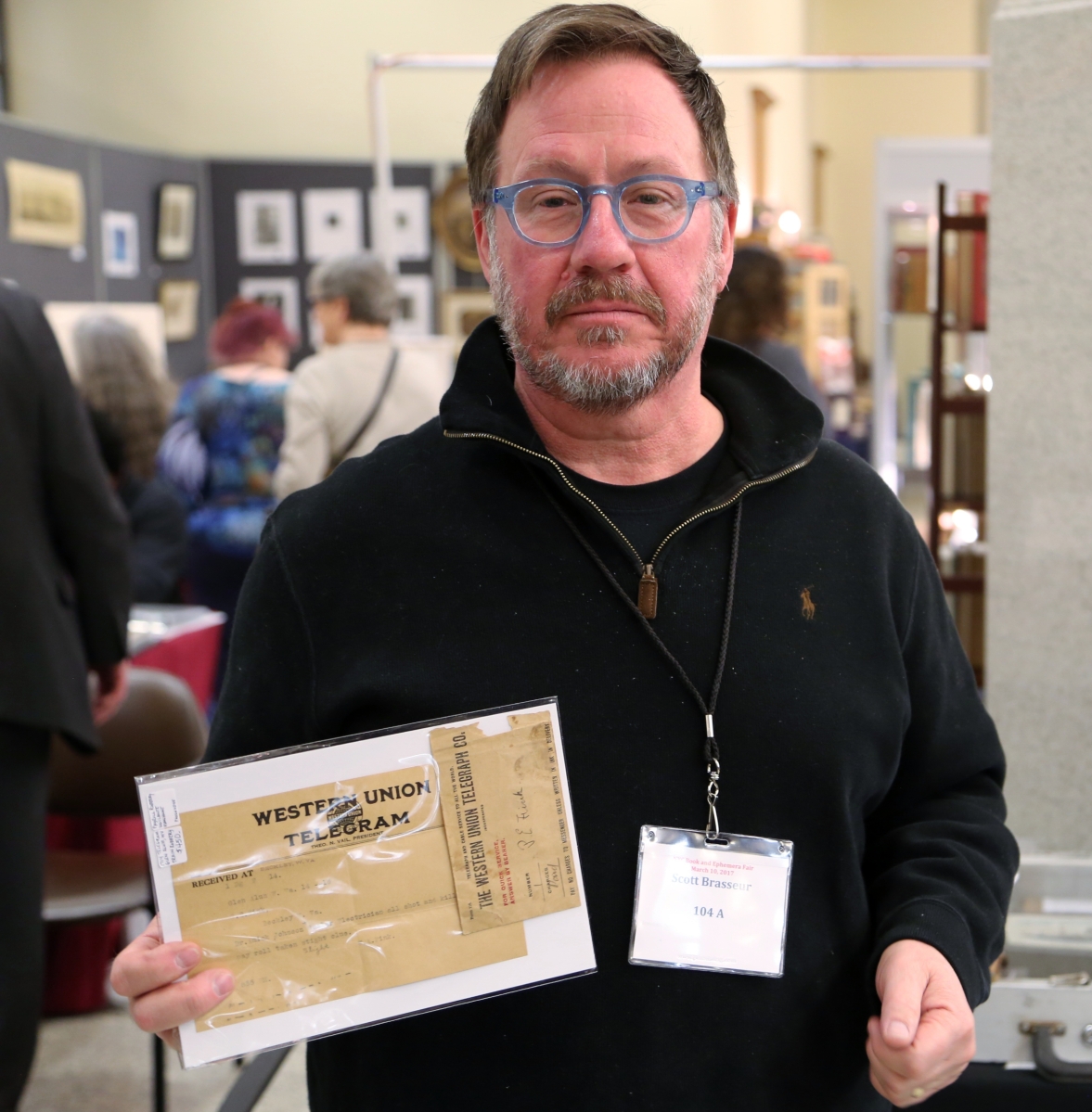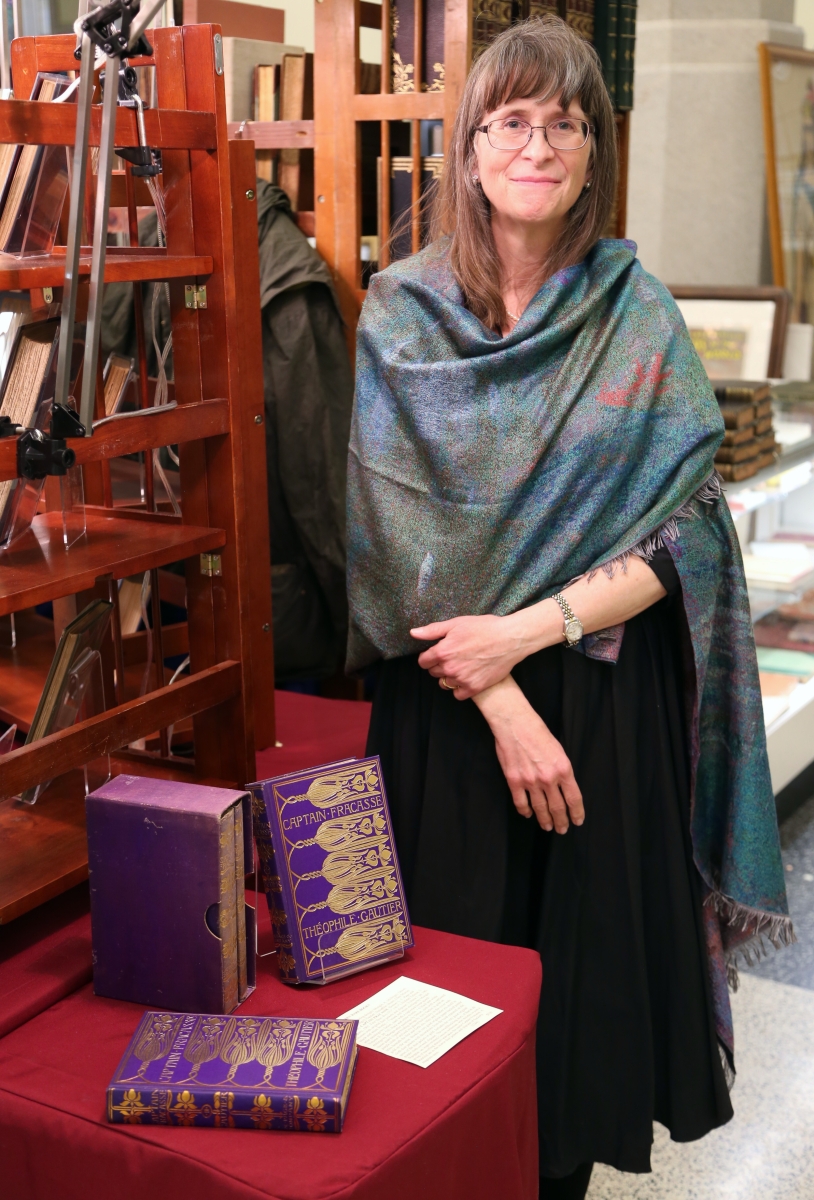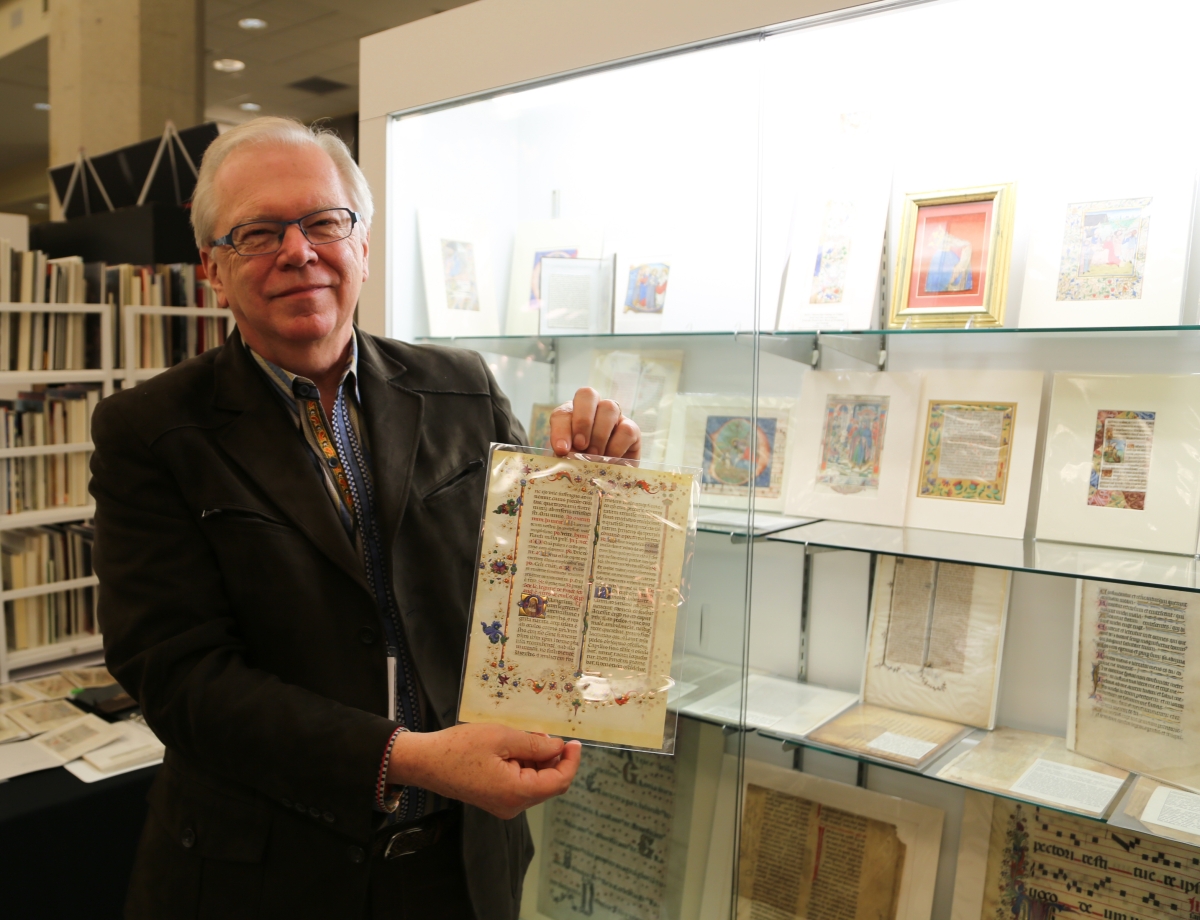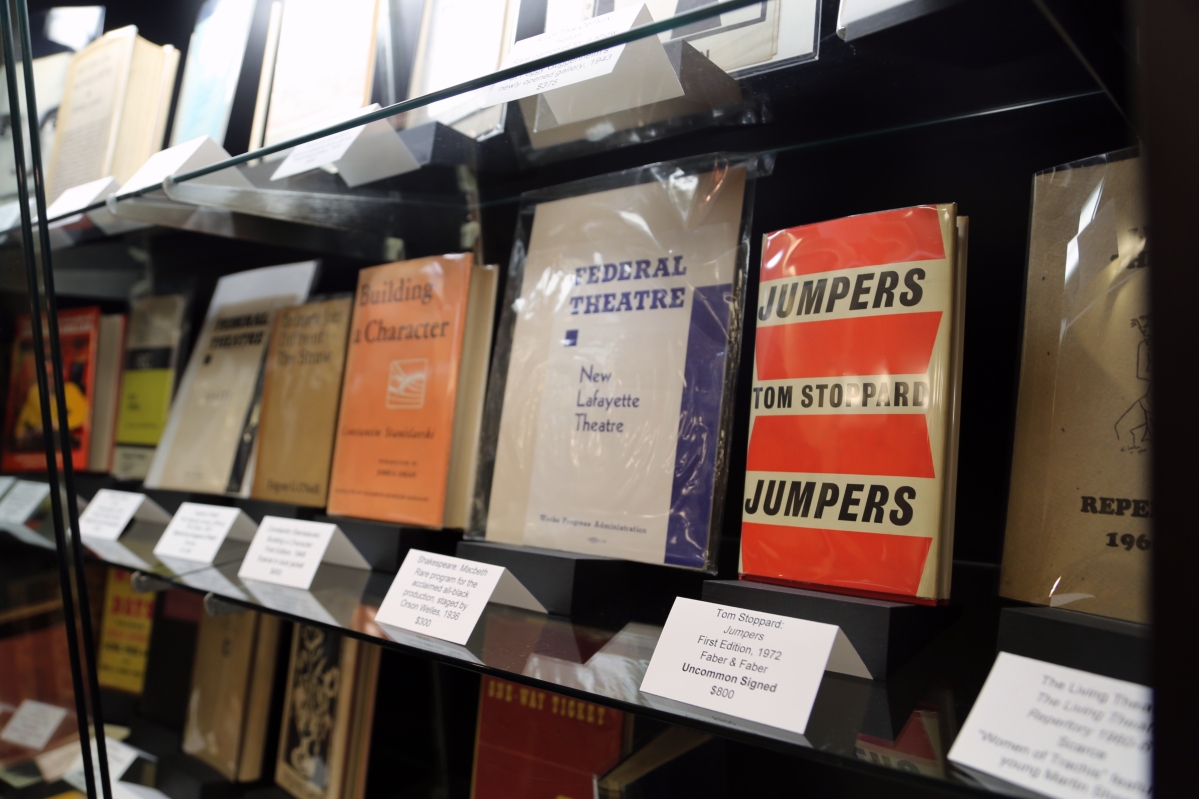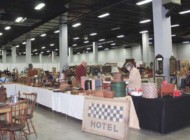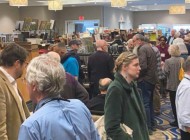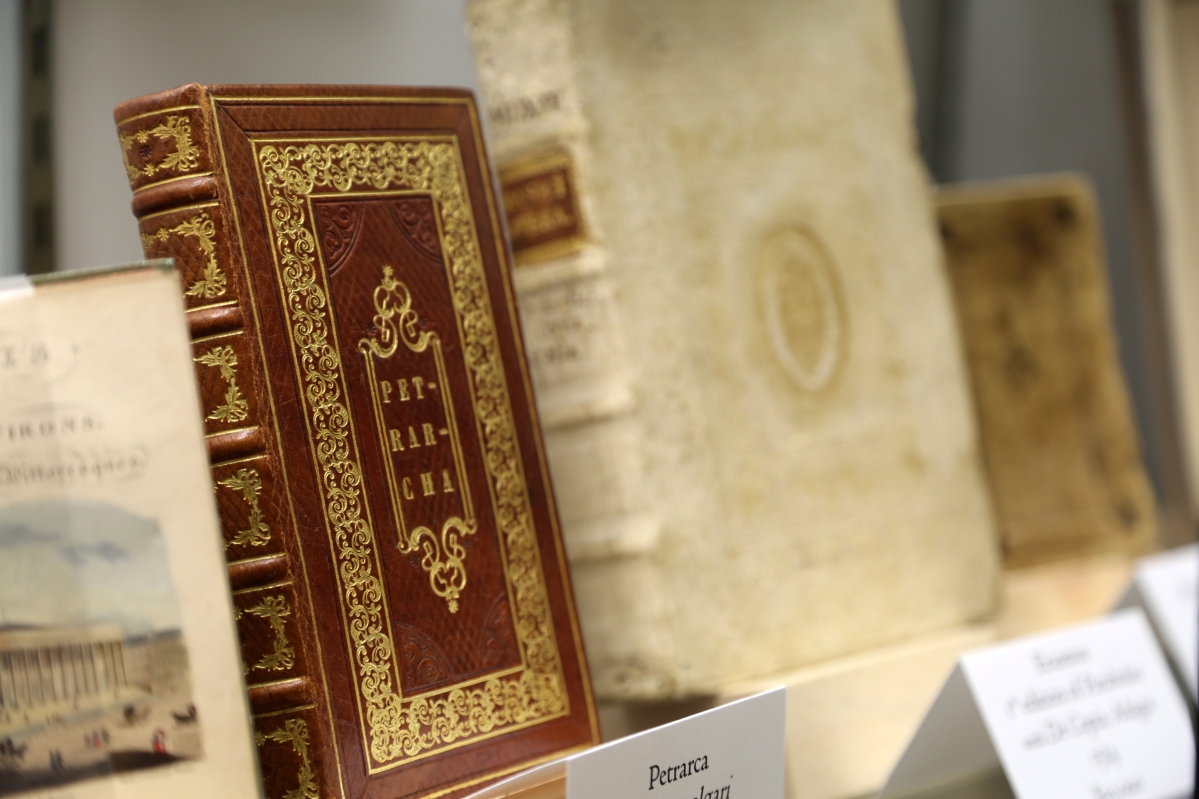
Rare Sixteenth Century books were on view in Rodger Friedman Rare Books Studio, Tuxedo, N.Y. The copy seen here is Francesco Petrarca’s Le cose volgari, Aldus, circa 1501.
Review and Photos by Greg Smith
NEW YORK CITY – The New York City Book and Ephemera Fair took over Wallace Hall at the Church of St Ignatius, Loyola as 47 dealers were drawn to upper East Side Manhattan for a sweet, one-day show that sets up shop in the heart of Rare Book Week. With a wide variety of offerings that dot every price point, the show attracts dealers with early and rare editions, coveted bindings, historical documents, early trade catalogs, international titles, ephemera, graphic artwork, photography and cartographic maps.
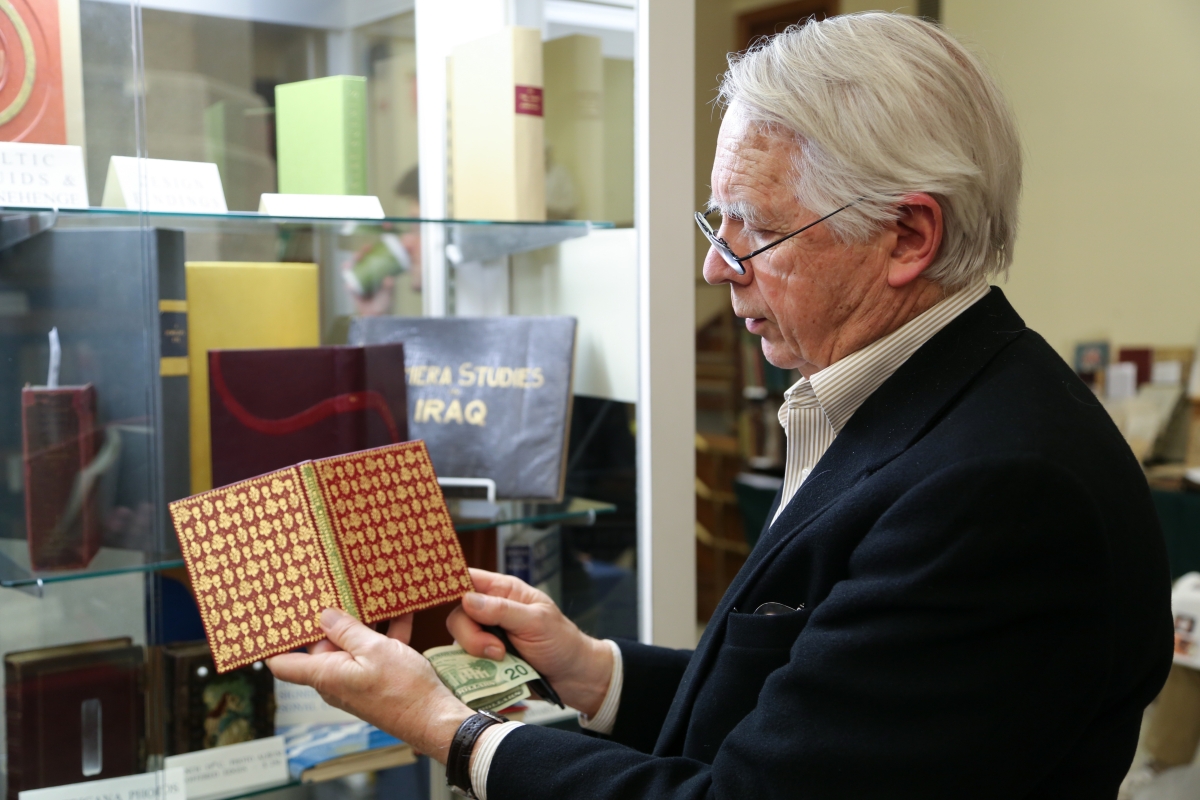
Tom Twetten of Craftsbury Antiquarian Books, Craftsbury Common, Vt., holds up a copy of Hellmuth Weissenborn’s Country Scenes. The book featured a gilt flower design on red backing, applied with a heated brass tool. The binding was done by Christopher Shaw, an English binder.
“New York is a very special market,” said Marvin Getman, the show manager. “Because it’s a satellite fair to the ABAA show, which is the best book fair in the world, it really offers an opportunity to attract some of the best buyers.”
The show was on a new schedule this year, opening for the first time on a Friday instead of Saturday and having extended hours through 7 pm. The changes seemed to bolster attendance for different sorts of buyers and kept a steady stream throughout the day. Getman said that half of the show attendees arrived in the morning between 8 and noon, before the armory opened, while the other half arrived in the latter seven hours of the day and attracted working professionals.
“This has been a lovely fair,” said Rodger Friedman of Rodger Friedman Rare Book Studio, Tuxedo, N.Y. The dealer featured a variety of rare Sixteenth Century books and reported good sales from a solid gate and steady stream of buyers throughout the day. “It has the great advantage of being a one-day fair with a great deal of comfort and efficiency. This is what the ABAA fair used to be in the old days. It’s a wide range of material and levels of dealers. I can’t imagine a nicer fair.”
Austin Abbey Rare Books, Mount Vernon, Va., exhibited a selection of books with rare bindings from the Nineteenth Century. Owner Adrienne Kitts featured a variety of titles from this period, saying “This was the great period of book design.” The dealer carried renowned cover designers, including Edwin Austin Abbey, for whom her business is named, Lee Thayer, Will Bradley, Frederick Cayley Robinson and Margaret Armstrong. Much like the contemporary market where covers sell books, beautiful bindings achieved the same effect in the Nineteenth Century. The dealer featured a royal purple and gilt binding with Art Nouveau designs by renowned Bostonian binder Amy Sacker for a holiday edition of Théophile Gautier’s Captain Fracasse.
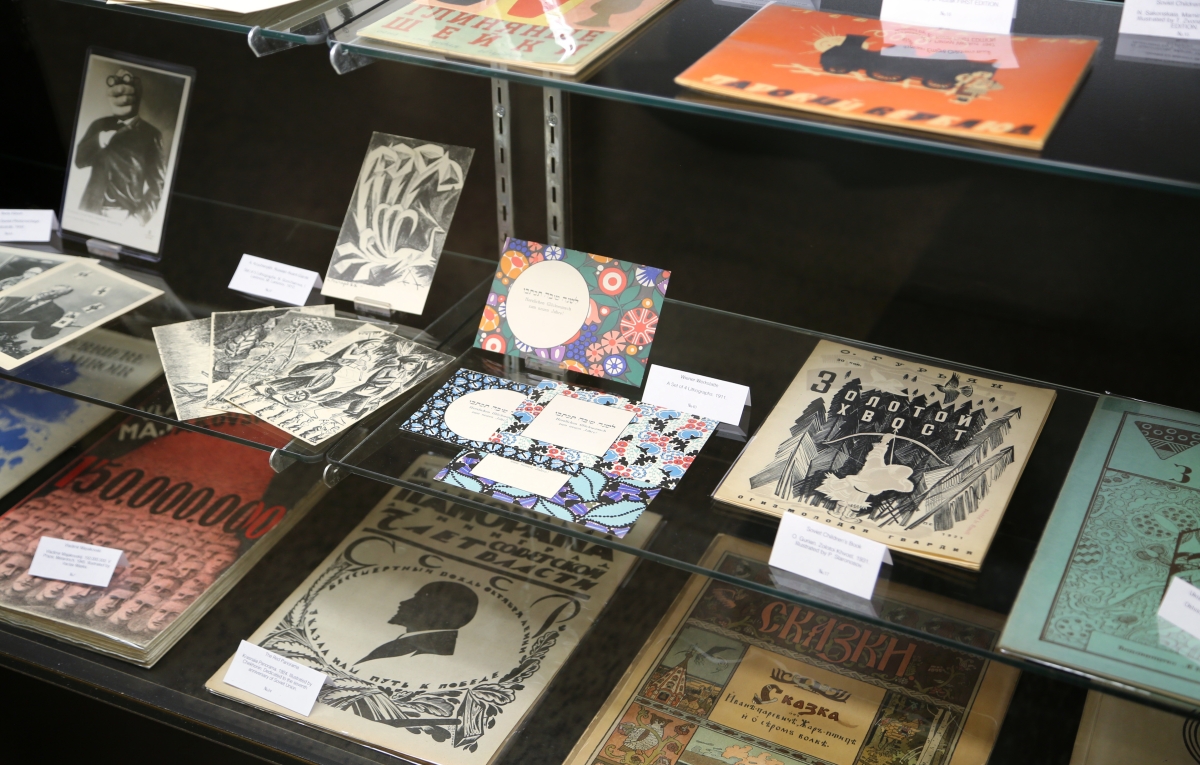
Eastern European lithography and children’s books were on show at the booth of Rare Paper, New York City.
Rare Paper, New York City, featured Russian and Ukranian pictorial material from the Twentieth Century. The owner, Emil Allakhverdov, carried lithographs alongside illustrated children’s books and other material that popped with bright colors, sharp lines and strong images that were no doubt influenced by the Russian avant-garde movement of the early Twentieth Century. “That’s the whole idea,” said Allakhverdov, “rare, pictorial, attractive.”
Blakeney Griffin Booksellers, London, featured an inscribed first edition copy of Jorge Luis Borges’ Ficciones, likely the very copy responsible for some of those stories to be translated into English. The copy featured an inscription from Borges to Donald Yates, the man responsible for translating Borge’s The Labyrinth into English, a later book that featured a selection of some of the short stories in Ficciones.
The show has found its practical niche in the midrange prices spanning anywhere from $50 to $25,000 from a solid core of knowledgeable and accredited dealers. “The average person can afford to buy here,” said Getman.
The New York City Book and Ephemera Fair will return next year. For general information, www.bookandpaperfairs.com.

